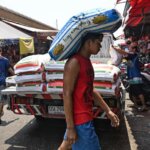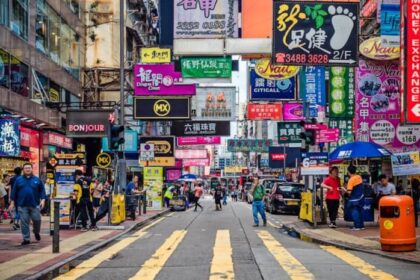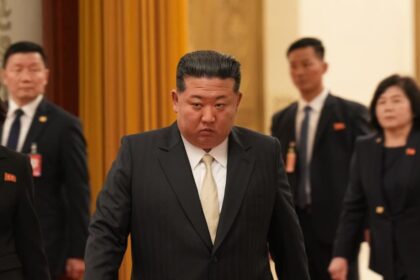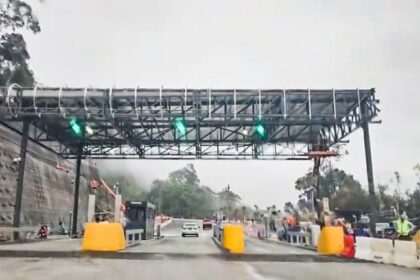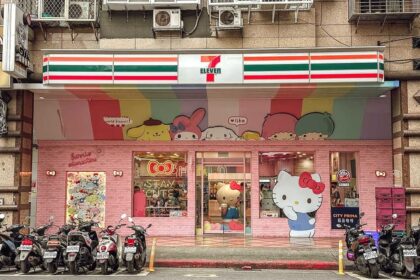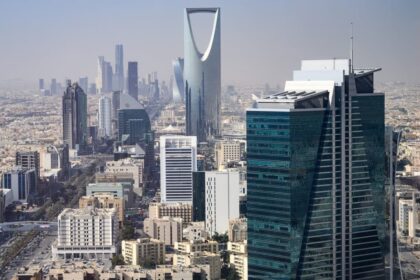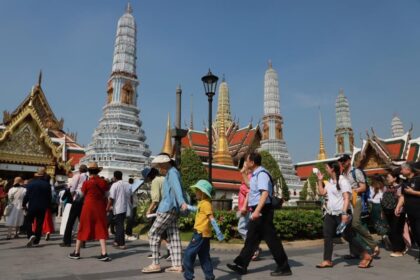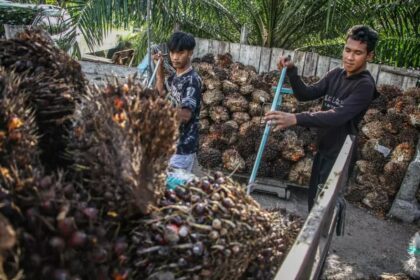Bangkok Art Exhibition Censored After Chinese Pressure: What Happened?
In late July 2025, one of Bangkok’s most prominent art venues, the Bangkok Arts and Cultural Centre (BACC), became the epicenter of a growing controversy over international censorship and artistic freedom. The incident began when Chinese embassy officials, accompanied by Thai city authorities, visited the BACC just days after the opening of an exhibition titled Constellation of Complicity: Visualising the Global Machinery of Authoritarian Solidarity. Their demand: remove or alter artworks and references that touched on China’s treatment of ethnic minorities and political dissent in regions such as Tibet, Xinjiang (home to the Uyghur minority), and Hong Kong.
- Bangkok Art Exhibition Censored After Chinese Pressure: What Happened?
- Why Was the Exhibition Targeted?
- How Did the Censorship Unfold?
- Who Are the Artists and What Was Lost?
- Why Does This Matter? The Broader Implications
- How Have the Public and Art Community Responded?
- What’s Next for Artistic Freedom in Southeast Asia?
- In Summary
The gallery, under pressure from both the Chinese embassy and the Bangkok Metropolitan Administration, complied. Artworks were removed, words like “Hong Kong,” “Tibet,” and “Uyghur” were blacked out, and the names of several artists were redacted. The censorship has since sparked international debate, raising urgent questions about the influence of foreign governments on local cultural spaces, the limits of artistic expression, and the future of Southeast Asia as a refuge for dissidents and exiled artists.
Why Was the Exhibition Targeted?
The exhibition at the heart of the controversy was curated by the Myanmar Peace Museum and featured works by artists from across the globe, including those in exile from China, Hong Kong, Tibet, Xinjiang, Iran, Russia, and Syria. Its central theme was the way authoritarian governments collaborate across borders to suppress dissent and maintain power. The show included multimedia installations, films, and graphics that directly addressed state violence, resistance, and the global entanglements of authoritarian regimes.
Among the most sensitive pieces were:
- A multimedia installation by Tibetan artist Tenzin Mingyur Paldron, including video footage of Tibetans carrying Palestinian flags and calling for accountability for genocide.
- Postcards featuring Chinese President Xi Jinping.
- Flags representing Tibet and the Uyghur region.
- Works by Hong Kong artists Clara Cheung and Gum Cheng Yee Man, and Uyghur artist Mukaddas Mijit, all of whom had their names blacked out or removed from the exhibition.
According to co-curator Sai, a Myanmar artist and activist, the exhibition was meant to “map global authoritarian networks” and highlight how regimes like China, Russia, and Iran reinforce each other’s repressive tactics. The irony, Sai noted, was that an exhibition about authoritarian solidarity was itself censored under authoritarian pressure.
China’s Official Response
China’s foreign ministry accused the exhibition organizers of “distorting its policies on Tibet, Xinjiang and Hong Kong” and promoting “fallacies” about independence movements and state repression. In a statement reported by the Bangkok Post, the ministry said:
China opposes anyone using cultural and artistic exchange as a guise for political manipulation and interference in China’s internal affairs.
The ministry did not confirm or deny direct involvement by the Chinese embassy but praised Thailand for taking “timely measures” to prevent the exhibition from undermining China’s “core interests and political dignity.”
How Did the Censorship Unfold?
The sequence of events began just three days after the exhibition’s opening on July 24, 2025. Chinese embassy staff, accompanied by Bangkok city officials, entered the BACC and demanded the shutdown of the show. According to emails and communications seen by Reuters, the gallery was warned that the exhibition could create diplomatic tensions between Thailand and China. The pressure was relayed through Thailand’s Ministry of Foreign Affairs and the Bangkok Metropolitan Administration, the exhibition’s main sponsor.
Initially, the gallery attempted to compromise by blacking out the names of artists from Hong Kong, Tibet, and Xinjiang, as well as the words “Hong Kong,” “Tibet,” and “Uyghur.” However, further demands from the Chinese embassy led to the removal of entire installations, including all video works by Tenzin Mingyur Paldron and any content featuring President Xi Jinping. Even after these changes, embassy officials returned to the gallery to request the removal of additional materials and to remind the institution to comply with the “One China policy.”
The “One China policy” is a diplomatic principle that recognizes the People’s Republic of China as the sole legitimate government of China, including its claims over Taiwan, Tibet, and Xinjiang. Most countries, including Thailand, observe this policy in their official dealings with Beijing.
During visits by journalists, video monitors that once displayed the censored works showed only black screens. Films by Uyghur artists played with the creators’ names obscured. The gallery staff and curators, fearing repercussions, declined to comment publicly. Some, including co-curator Sai, fled Thailand after Thai police reportedly sought to locate them.
Who Are the Artists and What Was Lost?
The censorship affected several artists, many of whom have spent years in exile due to their activism or political views. Among them:
- Tenzin Mingyur Paldron (Tibetan artist): Her works, including a film titled “Listen to Indigenous People,” were removed. Paldron’s installation explored the roots of a controversial viral video involving the Dalai Lama and broader issues of indigenous rights and state violence.
- Mukaddas Mijit (Uyghur artist): Her name was blacked out from the exhibition, and her work, which addressed the repression of Uyghurs in Xinjiang, was heavily edited.
- Clara Cheung and Gum Cheng Yee Man (Hong Kong artists): Their names and references to Hong Kong were redacted, and their works altered.
Other censored pieces included graphics linking China and Israel’s surveillance and repression of Muslim communities, and flags representing Tibet and the Uyghur region. The exhibition’s website now refers to these artists only by their country of residence, erasing their identities and the context of their work.
Artists Speak Out
In statements to the press, the affected artists condemned the censorship. Tenzin Mingyur Paldron told Reuters:
By forcing the gallery to remove significant parts of my work, the Chinese government has once again demonstrated that it wishes to cut Tibetans off from the rest of the world and does not want its complicity in other colonialisms and genocides to be recognized.
Paldron also questioned the role of museums, stating:
Museums should be for the people, not for dictators of any ideology.
Co-curator Sai called the situation “tragically ironic,” noting that Thailand has long been a haven for dissidents but now sends a “chilling signal to all exiled artists and activists in the region.”
Why Does This Matter? The Broader Implications
The incident at the BACC is not an isolated case. It reflects a broader trend of Chinese influence extending beyond its borders, particularly in Southeast Asia, where governments often balance economic cooperation with Beijing against concerns over political sovereignty and freedom of expression.
Rights groups and international observers have long accused China of conducting a sophisticated campaign of harassment and suppression against critics overseas. This includes efforts to silence dissidents, activists, and artists through diplomatic pressure, economic leverage, and, in some cases, transnational repression. Beijing consistently denies these allegations, insisting that it is merely defending its sovereignty and internal affairs.
Thailand’s compliance with Chinese demands is especially significant given its history as a refuge for political exiles from neighboring countries. The country’s willingness to censor art at the request of a foreign government raises concerns about the erosion of its tradition of openness and the safety of dissidents living within its borders.
Regional and Global Context
China’s growing influence in Southeast Asia is evident in multiple arenas, from trade and investment to cultural diplomacy and security cooperation. The BACC incident comes amid other reports of Chinese attempts to suppress critical voices abroad, such as efforts to block screenings of documentaries about the South China Sea in New Zealand and the Philippines.
Earlier in 2025, Thailand quietly deported 40 Uyghurs to China, despite warnings from the United Nations that they faced a high risk of torture and ill-treatment. China has consistently rejected claims of abuse in Xinjiang, calling them politically motivated.
The censorship of the Bangkok exhibition also highlights the vulnerability of the global art world to political interference. As galleries and museums increasingly rely on government funding or sponsorship, they may find themselves pressured to avoid controversial topics or silence dissenting voices. This trend threatens the role of art as a space for critical reflection, resistance, and dialogue.
How Have the Public and Art Community Responded?
The censorship has provoked strong reactions from artists, activists, and rights groups both in Thailand and internationally. Many see it as a dangerous precedent that could embolden further attempts to suppress free expression in the region.
Art-focused publications like Hyperallergic and ArtReview have emphasized the chilling effect on artists in exile and the broader implications for the global art community. The Human Rights Foundation and other advocacy organizations have called for greater protection of artistic freedom and for governments to resist external pressure that undermines fundamental rights.
Some Thai commentators have expressed concern that the country’s reputation as a safe haven for dissent is at risk. Others worry that the incident signals a broader trend of self-censorship and accommodation to powerful foreign interests.
What’s Next for Artistic Freedom in Southeast Asia?
The fate of the Constellation of Complicity exhibition remains uncertain. While the BACC has not commented publicly, the show is scheduled to run until October 2025, albeit in a heavily censored form. The curators and several artists have left Thailand, fearing for their safety.
The incident has sparked renewed debate about the responsibilities of cultural institutions, the limits of diplomatic influence, and the need to protect spaces for free expression. As China’s global reach continues to expand, similar cases are likely to arise elsewhere, forcing societies to confront difficult questions about sovereignty, censorship, and the role of art in challenging power.
In Summary
- The Bangkok Arts and Cultural Centre censored and removed artworks critical of China after pressure from Chinese embassy officials and Thai authorities.
- The exhibition, curated by the Myanmar Peace Museum, focused on authoritarian regimes and included works by exiled artists from Tibet, Xinjiang, Hong Kong, and elsewhere.
- References to “Hong Kong,” “Tibet,” and “Uyghur,” as well as the names of several artists, were blacked out or removed.
- China’s foreign ministry accused the exhibition of distorting its policies and praised Thailand for taking “timely measures.”
- Artists and curators condemned the censorship as a chilling signal for artistic freedom and dissent in Southeast Asia.
- The incident highlights China’s growing influence abroad and the vulnerability of cultural institutions to political pressure.
- Rights groups and the global art community have called for greater protection of artistic expression and resistance to external censorship.



